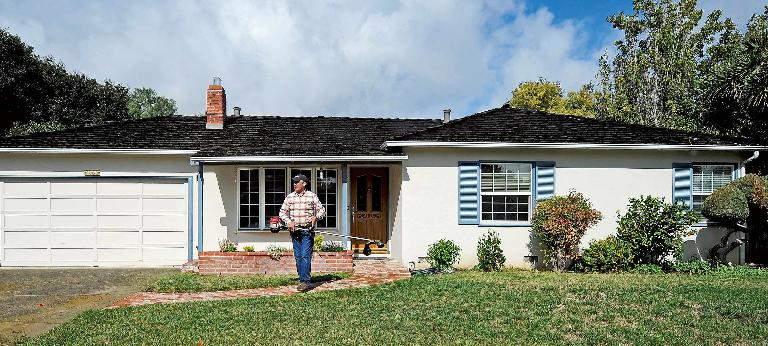Breaking the rules
![{[downloads[language].preview]}](https://www.rolandberger.com/publications/publication_image/Think_Act_Magazine_Breaking_the_rules_Cover_download_preview.jpg)
Is breaking the rules a crucial skill? We examine how the people who have made their own rules also significantly shaped the world of business.



The small area on the US west coast where some of the first tech startups clustered has since become synonymous with digital innovation. But in today's new high-tech world, the factors that drove Silicon Valley's success no longer apply.
Back in the day when the tech industry was just starting out, the area now known as Silicon Valley could have died before it got going. It had a rival: the tech cluster around Boston known as Route 128. The competition was legendary with each region wanting to be at the forefront. Yet while it was in Boston that venture capital as we know it today was created, it was in the Bay Area in California where innovation and so-called disruption truly happened. By the late 1980s, the Valley had outstripped its east coast, urban competitor and in 1994 a much-acclaimed study offered the first – and still most valuable – explanation: "The roots of the difference lie in the emergence of a decentralized, network system of technological and industrial organization in Silicon Valley that encourages innovation, collaboration and collective learning," as leading urbanist Richard Florida summed up AnnaLee Saxenian of University of California, Berkeley's now-famous analysis in a review published that same year.
While Route 128 was dominated by large, hierarchical companies that valued loyalty and strongly discouraged employees to leave or start out on their own, no one frowned upon those who left one corporation to start one on their own in Silicon Valley. In fact, a new generation of startups like Cypress Semiconductors, Sun Microsystems or Cirrus Logic were flexible and diversified enough that they could almost seamlessly react to the demands of a fast-moving market. Both regions had universities with leading research and training programs in engineering. But compared with Boston's MIT and Harvard, the Bay Area's Stanford and UC-Berkeley universities encouraged local firms to participate more in their activities. Hewlett-Packard also helped to set the tone in Silicon Valley by welcoming and even helping startups, while its 128 counterpart, DEC, was largely closed to the regional economy.
The rest is history. Over decades, a stretch of land just a 30-minute drive from San Francisco's rolling hills became the single reference for tech innovation and the home to three of the world's largest companies with a combined value of $2.5 trillion: Apple, Alphabet and Facebook. Saxenian's study Regional Advantage, which came out as a book in 1996, has since become a classic and a standard reference for the requirements of a successful startup ecosystem for it offered not only the analysis, but it also predicted the Valley's dominance over any other region in the US (or the world for that matter). In 2019 however, it may need a new afterword – or at least a little rewriting.
Route 128: Referred to by Businessweek as the "Magic Semicircle" back in 1955, the 93-kilometer road outside Boston, Massachusetts was home to the first tech cluster in the US.
A real-life problem of Silicon Valley today was put in a rhetorical question by an investment fund manager in a recent article in The Economist: "How are you supposed to have a startup in a garage if the garage costs millions of dollars?" The success of the world-famous tech cluster has led to the third-highest per capita income in the world – but also the highest costs of living in the US. At the same time, technology and digitization have led to an unforeseen surge in tech entrepreneurship around the world. First, there was what people in the Valley called "the rise of the others": cities and regions in the US starting to build tech hubs, regional governments luring entrepreneurs with benefits in taxes and overall lower costs and local universities sharply heading towards fostering entrepreneurship and excellence in tech. One need only look at Microsoft in the Seattle suburbs; Austin, Texas; North Carolina's Research Triangle; and New York City, among others.
But the race today has gone global. "As late as the mid-1990s, nearly all global venture capital investments went to US companies," says Richard Florida. "Well, things have changed significantly in recent years. During the second half of the 1990s and throughout the 2000s, venture capital slowly began to flow into locations outside the US. The last five years have seen a dramatic rise in startup and venture capital activity in locations in Europe, Asia and elsewhere."
A rapid transformation is taking place in all parts of the world leading to the world's high-tech entrepreneurs being able to stay in their home city or nation and raise venture capital. This is also the result of the Valley's technologies, says Harvard Law School Distinguished Fellow Vivek Wadhwa, who also serves as a professor at Carnegie Mellon College of Engineering: "I don't see Silicon Valley becoming less innovative but I do see the rest of the world learning from it and becoming fiercely competitive ... The only real advantage that the Valley has are its networks, diversity, culture of openness and risk-taking and the mentorship its entrepreneurs provide to each other. But this is what the rest of the world is learning."
10 out of 12 of 2017's largest internet financings were in Asia, including Meituan, Toutiao, Ofo and Koubei in China. The two remaining from the US were Uber and Airbnb.
Some startup ecosystems are focused on feeding the national market, as is commonly seen in China or India. Others, due to the small size of their region, reach out globally from day one, such as the majority of startups in Tel Aviv or Stockholm. "Of course there is a set of factors that we know today that explain success and failure in startup ecosystems. Access to talent and capital, a significant target market, a tech infrastructure among others. But the mix is highly individual," says Thomas Funke of Frankfurt's Goethe University. "Not only are developments superfast in technology, they are also superfast when it comes to determining the conditions for innovation."
Rebecca Fannin, the head of Silicon Dragon Ventures, a news group covering the world's leading startup hubs outside the Bay Area, explains: "All you have to do is turn to the 12 largest internet financings in 2017. A remarkable 10 are in Asia." And other regions are also catching up: According to Nazar Yasin, the founder of Rise Capital, two of the top ten net IPOs are headquartered in Latin America. It seems likely that more cities and regions will follow. "In 2002, I predicted the shift from suburban 'Nerdistans' like Silicon Valley back to cities. Now San Francisco and New York have overtaken Silicon Valley proper for venture investment in high-tech," says Richard Florida. His recent CityLab Report showcased the rise of a number of clusters globally that attract investors and entrepreneurs alike. By 2018, those capital-attracting metropolitan areas amounted to 300, spanning over 60 countries.
So, how could AnnaLee Saxenian's legendary study be amended to today's realities? "I believe the same factors are still at play: the culture, the diversity, the entrepreneurial community," says Vivek Wadhwa. "But while openness and collaboration between startups in the Valley were part of the reason for its success back then, founders and their startups need to be globally connected today. This is crucial. But it has become a lot easier because of the internet and its services. The world is becoming a connected community."
"The last five years have seen a dramatic rise in startup and venture capital activity in locations in Europe, Asia and elsewhere."
Creating an environment for innovation and entrepreneurship is seen as one of the most vital ingredients. "To be a great startup ecosystem you need to be a great city and invest in the fabulous four: technology, talent, tolerance and town, which means quality of place," says Florida. "Yes, Chinese cities can deploy big wads of cash. But I think the future is in places like London and Berlin and Toronto and Paris and Stockholm and Amsterdam and Sydney – and yes, New York and San Francisco." And it might also be that things will take a completely different route altogether: "Maybe we should not ask which ecosystem will be first next. But who will solve the biggest problem next," thinks Thomas Funke.
Could this all mean that the legendary Silicon Valley might become a location of archaeological interest for has-been startups? Maybe not yet. But in Palo Alto, the garage where Hewlett-Packard, the company that invented the first computer, was founded in 1939 serves as a private museum: a monument to the Valley’s history of innovation. And now its supremacy as the place to innovate is up for grabs – a stark reminder that innovation and innovators always keep moving. Literally.
There are several parameters by which a new tech ecosystem can be evaluated for startups. These include: access to funding, access to talents, size of the potential market, and the amount of experience there is within a particular startup community (serial founders, experienced programmers and investors). Using these criteria, Startup Genome ranked the top 20 places around the world for its global startup ecosystem study (2017).

![{[downloads[language].preview]}](https://www.rolandberger.com/publications/publication_image/Think_Act_Magazine_Breaking_the_rules_Cover_download_preview.jpg)
Is breaking the rules a crucial skill? We examine how the people who have made their own rules also significantly shaped the world of business.
Curious about the contents of our newest Think:Act magazine? Receive your very own copy by signing up now! Subscribe here to receive our Think:Act magazine and the latest news from Roland Berger.
